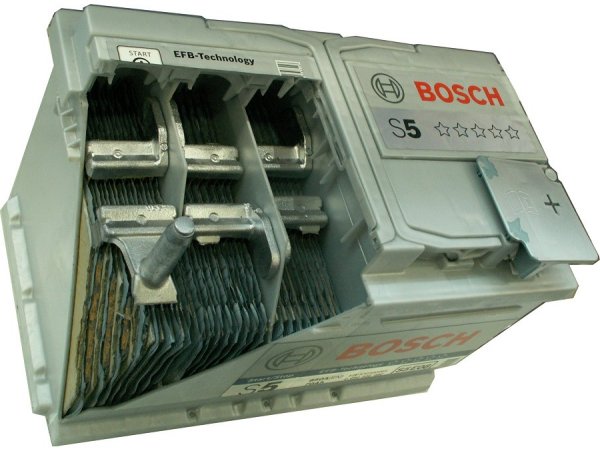Absorbent-Glass-Mat-Battery


Function
As an absolutely maintenance-free battery it is more demanding as far as charging control is concerned. Quite simply, the build up of too much gas must be avoided. Therefore, the voltage regulator must maintain a guaranteed maximum voltage (e.g., 14 V) and perhaps reduce the charging voltage well before reaching this limit. Also a complete discharge is to be strictly avoided. This is especially important if the vehicle is taken out of use for some time. Advantage: It need not be recharged as often.
How it works
Wet cell battery
The electrolyte is liquid and can be complemented either by cell plugs and distilled water, or it is hermetically sealed and therefore maintenance-free. There is a central aperture from which possible emerging gases can escape. This battery cannot be used in the interior.
VRLA battery
The Valve Regulated Lead Acid Battery (valve-controlled lead battery with liquid acid) prevents the escape of gases generated under normal charging conditions by a pressure control valve. As long as it is not over-charged, the battery is maintenance-free.
AMG battery
The Absorbent-Glass-Mat-Battery (battery with suction glass mat fleece) is completely sealed and is also called fleece battery because the battery acid is completely absorbed by fibreglass-or fleece mats. Because the absorbtion of liquids is slightly more effective using fleece, the battery remains dry and can
function regardless of placement, at the same time, avoiding the disadvantages of a gel battery. Thanks to the absence of antimony, no water consumption and less self-discharging takes place. Should gas be generated, it is conveyed through the pores of the fleece to the negative pole.
With good charging regulation no gas escapes and, should the casing be damaged, also no electrolyte. The sludge build-up and with it the danger of an internal short circuit is remote. The AGM battery is not only independent in placement, but also shakeproof. Previously, the rooms in which batteries were charged had to be well ventilated, this is no longer necessary today when using suitable charging technology. A more efficient cold current performance is achieved, important for starting the engine in winter. It is especially well suited for application as a rarely used second battery. 07/08
|